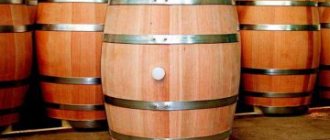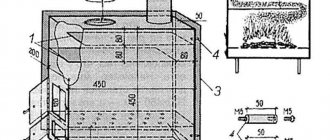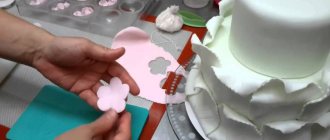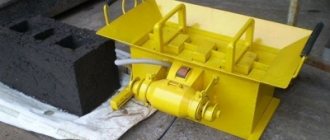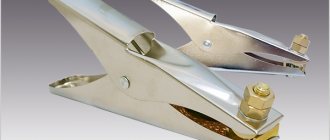A wine water seal is a valve. The most effective means of preventing the alcohol solution of wine or mash contained in a particular vessel from souring. The principle of operation is that with the help of this device, gases released during fermentation of wine material are freely released from the vessel into the external environment. At the same time, the penetration of oxygen contained in the air and capable of oxidizing alcohol to vinegar is blocked.
The need to use a water seal for fermentation is dictated by the process technology itself. It is always characterized by the fact that in a certain volume of mash, the yeast begins to actively absorb sugar. As a result, the wort, which is chemically neutral in its initial state, is converted into two components: ethyl alcohol and carbon dioxide. Its concentration in the vessel gradually increases. The pressure increases accordingly. This requires constant removal of gas to the outside.
A tight lid on the jar is completely eliminated. Its use will block the removal of gases and may lead to an explosion of the vessel. You should also not leave the jar open or not tightly closed. As a result, oxygen will penetrate inside and the oxidation of ethyl alcohol to vinegar will begin. Thus, the question of creating a device that allows the free removal of internal gases while simultaneously blocking access to external air arises on its own. It can be solved using a water seal.
Options for water seals for making a house
Homemade water seal for wine from a glove
If the raw materials will ferment in a glass jar, an ordinary rubber glove can serve as a water seal, but not a household one, but a medical one: it stretches better.
We put a glove on the neck of the jar, secure it well with an elastic band and pierce one of the fingers. During fermentation, it will inflate with the gases released, and their excess will escape through the hole made.
Once fermentation stops, the glove will hang. By the way, the glove can be replaced with a balloon.
How to make your own wine water seal from a hose and a lid
Before learning how to properly make a water seal for wine, we buy a glass jar with a lid and a piece of hose. This design option is suitable for ordinary jars and bottles with a narrow neck. For a jar you will need a simple polyethylene lid, for a bottle - a rubber one.
We make a water seal as follows:
- We punch a hole in the lid according to the diameter of the hose, which should not be too small so that the hose does not become clogged with foam.
- We insert the hose into the hole and seal the area of contact with the lid with plasticine or glue to prevent air from entering.
- We close the container with a lid with a piece of hose and seal the contact area between the lid and the jar (bottle) using tape or plasticine. The hose must not touch the wort.
- Place a jar of water at the same level as the container and immerse the end of the hose there. We secure it so that it is constantly in the water.
The main thing is that the water seal is airtight, only then will fermentation proceed correctly.
How to make a water seal for wine from a medical syringe
To begin with, we buy the following devices:
- A rubber band (you can use a piece of twine);
- A syringe of 10 ml and another one of slightly larger volume;
- IV.
To begin, remove the fittings from the syringes and throw them away, and cut off the tube from the dropper, leaving a piece 3 cm long.
What we do next:
- Using a needle, we tear off the filter located inside the dropper - it will not be useful.
- We insert a 10 ml syringe into the dropper, pointing the transparent hose inward. We position the second syringe so that both syringes are positioned like a jack, and fasten the structure with an elastic band. The small syringe collects carbon dioxide, the larger one contains water.
- We connect the noses of the syringes with a hose from the dropper, the length of which should be such that it does not break.
The water seal is ready, all that remains is to install it on the container and use it for its intended purpose.
How to make a water seal from a dropper
It will require a part of a dropper through which air is supplied to the bottle. To make this shutter yourself, follow the instructions:
- Close the jar (bottle) with a plastic cap (bark stopper).
- We make a hole in the cap (stopper) by piercing it with a needle from a dropper.
- Place the free end of the tube from the dropper into a bottle or jar of water.
Thanks to this design, carbon dioxide will easily escape from the container through the tube, and water will not allow air to penetrate inside the can (bottle). If the wort is fermenting, air bubbles will float in the jar of water; if it stops fermenting, they disappear.
Now you know how to make a water seal for wine with your own hands. All that remains is to buy a few simple “spare parts”, make a water seal and prepare aromatic wine.
We recommend growing your own mushrooms at home. Unique and affordable technology. TRY TO GET A HARVEST OF FRESH AND TASTY MUSHROOMS IN JUST A MONTH! All details and ordering by .
Classic design
- glass jar;
- lid;
- hose.
This is an affordable, simple and fairly reliable wine closure design. It is suitable for both a regular jar or bottle with a wide neck, and for a suley (a special container with a narrow neck).
To make a water seal, you will need a standard polyethylene lid for jars or a rubber lid (stopper) for suley.
- It is necessary to make a hole in the lid with a diameter suitable for the prepared tube (flexible plastic or rubber hose).
- Insert the tube into the hole and carefully seal along the contact line. For this you can use glue or plasticine. These materials will not only ensure tightness, but will also securely secure the tube. It would be useful to first check the quality of the tube; there should be no through holes on its walls. It is worth considering that with a small hose diameter, the water seal can quickly become clogged with foam, so the use of thin capillary tubes is not recommended.
- A lid with a tube is used to close the container with the wort. The contact point between the lid and the neck should also be made airtight: covered with plasticine or tightly wrapped with tape.
- The other end of the tube is immersed in a small vessel with water. It is installed at the same level as the container in which the wort is located. Important: for the free release of carbon dioxide from the container, it is necessary that one end of the tube does not touch the wort poured into the bottle, and the other is constantly immersed in water (it is advisable to secure it).
A DIY wine closure must be airtight.
This is an important condition for the proper functioning of the fermentation process.
If the wort is actively fermenting and there are no bubbles in the vessel with water, you need to check the quality of the insulation of the lid and the tube that goes into the lid.
If the seal is not broken, then it’s worth looking into. This water seal is convenient because it allows you to very accurately determine the completion of fermentation. If there are no bubbles in a vessel with water for 1–2 days, the finished wine must be drained from the sediment.
How to make a water seal for mash with your own hands
There are several options, each of which is worth considering in detail.
Classic water seal
To make it you need a jar, a tube and a lid to close the container; sometimes it is imitated from a piece of plasticine.
You need to make a hole in the lid, insert a tube and seal the gap between them. To do this, you can use sealant, wax, plasticine or another similar product.
The second end is lowered into a jar filled with water and secured with electrical tape or string.
Important! If you use a tube of very small diameter, especially for a large container, it can become clogged with foam, so you should choose the diameter of the tube in accordance with the volume of the mash.
The main advantage of this design is the visibility of the completion of the fermentation process, which will be expressed in the disappearance of bubbles on the surface of the water.
This design can also be equipped with a gas outlet into the sewer or outside the window, which will eliminate the specific smell of fermentation. To do this, you need to make a lid on the jar of water, similar to the lid of the steamer. In this case, a jar is needed either with a thread for a lid, or a nylon lid for a regular jar; the ideal option is a steel lid with welded tubes.
Two holes are made, into one a tube is inserted through which carbon dioxide flows, it must be lowered under water, into the second - a tube through which the gas will be discharged to the selected location, both joints are sealed.
The big problem is to make a water seal for the mash on an aluminum flask, since there are only two options: either drill the lid, which will make it suitable for only one task, or make a replacement for it - a “stopper” made of wood - and drill a hole in it. To seal the seams around the circumference you will need a lot of plasticine.
Of course, you can cover the neck with thick polyethylene, secure it by wrapping it around the circumference with tape, and after making a hole in it, insert the tube. Then for sealing you will need liquid silicone or other sealant; plasticine will not work, and such a “lid” will have to be remade from time to time.
Glove
A very simple solution, which is not essentially a water seal, since a water plug is not used. An ordinary medical glove is pulled over the neck of the container. A small hole is made in one of the fingers to allow carbon dioxide to escape.
The point is that even after the first active days, when the gas begins to be released less intensely, there will still be enough of it to prevent oxygen from penetrating through the small hole inside.
At the beginning of fermentation, the glove swells strongly, over time it becomes weaker and weaker, and finally its fall indicates the complete completion of the gas evolution process.
Cotton plug
This is a last resort solution if a glove breaks or a jar breaks. The neck is plugged with tightly packed cotton wool or other porous material that allows carbon dioxide to pass through.
The effectiveness of this “design” decreases as the end of fermentation approaches and the release of carbon dioxide decreases, due to which oxygen begins to enter. Also, in this version, it is visually unclear at what stage the fermentation is.
From syringes
To do this, you will need two disposable plastic syringes, about 10-20 cubic meters each, depending on the volume of the container for the mash mass. The pistons are removed from them, and the bodies are tied to each other with electrical tape or adhesive tape with the noses facing inward.
One spout is connected to the other via a tube. All this must be done when one of the housings is already inserted into the lid that will close the container. Cutting a hole in the lid and sealing it with silicone or plasticine is not difficult. After the cap is placed on the neck, water is poured into the body of the upper syringe.
Materials of fermentation containers
The quality of the wine is also affected by the fermentation container.
To choose a container, you must first decide on the desired volume. There are containers of 3 l, 10 l and up to 100 l in volume. For some, it is enough to buy a bottle with a volume of 3 liters or, while for others, a 20-liter bottle is required to make wine. To choose the volume, you need to decide how much wine you want to get in the end. How to choose the right mash container with a water seal?
- Glass. This material is convenient because you can observe the fermentation process through a glass bottle. The disadvantage is fragility, rapid cooling and light penetration, which affects the quality of the wine.
- Stainless steel. A container for fermenting mash made from this material is ideal. Its big advantage is that it suppresses the proliferation of pathogenic microorganisms that can spoil wine. The disadvantage is the high price. But if winemaking is your passion and you care about the quality of your product, then it’s worth spending some money once and then enjoying the wonderful taste of the drink.
- Tree. It can saturate your wine with new aromas. The disadvantages include the price and possible drying out of the material. As a result of drying, cracks will form and the container will no longer be airtight.
- Plastic. Plastic mash containers will not be the best option. This is because the environment in the container will be mostly acidic. Such an environment will provoke the entry of harmful compounds and unpleasant odors from the plastic into the wine.
- There is also a ready-made container for mash with a water seal. The advantage of such a fermentation container with a water seal is that there is no need to additionally purchase a water seal.
If you know how to choose the right container and make a water seal, you can easily prepare aromatic, homemade wine. Treat your guests to this drink and they will definitely be delighted.
Purchased
Purchased water seals are more compact in appearance. There is no whole system of tubes, hoses, cans and other devices. The most obvious advantage is that there is no need for assembly. Structurally, there are 2 types of factory hydraulic valves:
- Double-chamber: a monolithic water seal consisting of two sections containing water. Made of thick-walled food grade plastic. Has a cone-shaped silhouette. The tightness of the connection is achieved by a sealing plug. Other names: coil, fermentation pile.
- Three-chamber: a collapsible glass made of three parts. One of the chambers is filled with water to the required level.
The choice of water seal designs is large enough for everyone to be able to find a suitable type and not have to wonder whether a water seal is needed.
Moonshine quality guarantee
Since the last century, prejudice against moonshine has been firmly rooted in the minds of citizens. Meanwhile, these days, a strong home-made drink can adequately compete with factory-made vodka for the simple reason that the quality of the products on store shelves often leaves much to be desired. It’s no secret that illegal products that pose a health hazard are released into trade through “leftist” channels.
When buying store-bought cognac or vodka, you can never be sure that the holiday will not turn into a tragedy, as has happened more than once
In the case of homemade moonshine, the master is always confident in the quality, since he adheres to the technology and prepares the drink for himself, family and friends, while showing every possible caution and discretion. https://youtube.com/watch?v=1YDyyep0hFM%3Ffeature%3Doembed
https://youtube.com/watch?v=1YDyyep0hFM%3Ffeature%3Doembed
How to make a gate for mash with your own hands?
A simple mechanism allows you to make a water seal for mash with your own hands at home practically out of nothing. The price of such a mechanism can be reduced to zero. The only thing that should not be forgotten is the tightness of the structure. You can seal the joints with silicone aquarium glue, plasticine, or epoxy. Many brewers recommend using dough for this purpose. But there is a problem with the dough: when it dries, it can crack, which will allow air to enter the mash. For sealing, only environmentally friendly, health-safe materials should be used.
Water seal from a glove
Many people are familiar with this type of closure from childhood, when during the summer season there were such funny gloves on the bottles. For this species, which cannot quite be called aquatic due to the lack of water, an ordinary medical glove is used. This type of water seal is the most common among people. To operate it, a glove with a strong fixation at the base is put on the neck of the fermentation tank. You can fix it with electrical tape or an elastic band. A needle is used to make holes in one or more fingers through which carbon dioxide will leave the container and oxygen will not be able to penetrate.
If a bottle of less than 15 liters and a large neck diameter is used as a fermentation container, this method will be very convenient to use. It’s also good that the fermentation process proceeds clearly, because during the active release of carbon, the glove inflates. It falls off at the time when fermentation comes to an end and you can move on to distillation.
Water seal from a glove
Cotton plug
A water seal made of cotton wool is the simplest and “lazy” method, which should be used only if there is absolutely no possibility of using other materials. In this case, a thick cotton plug is inserted into the neck of the fermentation container. This method does not exclude oxygen from entering the container, and there is only one way to visually monitor the end of the fermentation process - bring a lit match to the neck. If the match burns, it means that fermentation is over; if it goes out, then this means that carbon dioxide is still being released. This is a very conditional method of verification, although it is better than nothing. The only positive aspect of this type of water seal is its sterility.
With odor removal
Making an odor removal system is very simple. To do this, you will need a jar of water and two pieces of flexible tube or thin hose. The jar of water is closed with a lid in which two holes are made to fit the diameter of the tube. In the first section, one end is inserted into the fermentation container, and the second is pulled through the hole in the lid of the jar and immersed in water. You need to insert another piece into the second hole without lowering its end into the water. The free end of the hose coming out of the can is led to the upper part of the sewer pipe, to the ventilation or directly to the street.
From syringes
To create such a shutter, remove the fittings from two syringes. Both tools are connected to each other with an elastic band or tape, their noses should point in different directions. The hose from the dropper must be used to connect the nozzles of the syringes so that no kinks or kinks are formed. The tool, which faces upward, is hermetically attached to the neck of the fermentation container. The second one collects water.
Although many people refuse to use a water seal in their production, its benefits and benefits remain obvious. Beginners are recommended to master moonshine making using a water seal system, since it is simple, reliable, and does not require the investment of significant funds and effort. At the same time, it can save a large volume of product from souring at the initial stage of preparation.
Fighting odor
During the active fermentation phase, the smell spreads throughout the house. How to get rid of odors? To do this, lower the temperature or move the container to a cooler room. When vigorous fermentation ends, the vessel should be returned to its original place. The room temperature should be optimal.
Some distillers say that the shutter is also made to combat unpleasant odors. It is recommended to fill the tube with water. They recommend special nozzles that absorb odor, but this does not always help.
The smell from the apartment can be removed as follows. A water seal is installed directly into the sewer system, where gases are removed during fermentation. They cannot overcome the liquid column and remain in the sewer.
The water seal is an indicator of the intensity of the process in the mash. If no bubbles appear on the surface of the liquid, anaerobic digestion is complete. The mash acquires a specific smell and taste. The end of the process can be determined using a wine meter.
A water seal is needed to obtain a quality product. This design is necessary when the fermentation process is slow.
Some non-standard options
When listing the following methods, the saying involuntarily comes to mind that “the need for invention is cunning.” What exceptionally inventive master winemakers will go to!
- use a regular valve with a ball from a vodka bottle;
- adapt nipples from bicycle inner tubes complete with soft thin capillary hoses;
- put an inflatable children's balloon on a bottle of wort and poke a hole in it;
- Insert cocktail tubes and juice straws into the hole in the lid.
To make the connections airtight, you can drip them with wax, paraffin, use pieces of plasticine or
Whatever water seal is used in the distillation of homemade drinks, you need to remember the importance of a tightly fitting lid, the gas pressure in the container with fermenting wort, and the aging time of the finished wine
Attention, TODAY only!
Volume and other characteristics
It is well known that the mash container should be one third larger in volume than the liquid poured into it. Beginners usually use plastic or glass containers from 10 to 30 liters. Smaller containers (3 l, 5 l) can be taken for drinking mash and other homemade alcohol. These volumes are not enough for distilling and preparing strong homemade alcohol. It is convenient to use large-volume fermenters and with a wide neck it is convenient to pour, drain and wash containers into it.
Experienced distillers have at their disposal large stainless steel tanks for mash or TsKT (cylindrical-conical tank), their volume can be from 30 to 500 liters. It is impossible to carry them, and therefore such containers are equipped with everything necessary: a tap, a water seal, a heating and mixing system.
Guidelines for choosing a water seal
If you are installing or replacing plumbing fixtures (bathtub, sink or toilet), you will definitely need a siphon.
To select a device that fully complies with plumbing, it is necessary to take into account a number of factors, including:
- dimensions of the assembled device;
- siphon type;
- the material from which the pipes and fasteners are made;
- number of drains or additional connections;
- protection against blockages;
- diameter of inlet and outlet;
- presence or absence of overflow.
Let’s assume that for a kitchen sink, the most suitable option is a bottle model that traps food particles. You can also use a knee device, but then all the waste will flow into the sewer pipe, and over time there is a risk of blockage.
For both sinks and bathtubs, models with an overflow are considered more effective, preventing room flooding. The recommended material is polypropylene, but for finishing the external parts it is better to buy models with chrome parts
If the project involves installing a sink or washbasin with two sinks, a device with two drain points will be useful. Its operating principle is the same, the only difference is in the design.
Before purchasing, be sure to measure the size of the space where the installation will take place. It happens that the siphon simply does not fit in the allotted space (this is especially true for the close gap between the bathroom and the floor). If you choose the right water seal, there will be much fewer problems with its installation and repair.
If the water seal from the siphon is pulled into the sewer, the system is modernized by installing a vacuum valve:
Characteristic features of the overflow system
Another type of product is a hydraulic siphon with a water seal for a sink or sink, equipped with an overflow system. The device is equipped with an additional pipe, which eliminates the possibility of flooding of the apartment if it is impossible for water to drain into the sewer. This pipe is inserted into a hole specially created for it, which is located in the upper part of the sink or sink.
Read Madera wine: varieties and best brands of the drink, how to choose and drink alcohol
Hydraulic valves with an overflow system are made of plastic or metal. Plastic products have a lower cost and are very flexible. Brass-bronze siphons are characterized by strength, durability, complexity of installation and high cost.
The water seal for a sink or sink is equipped with an overflow system - an additional pipe, thanks to which the possibility of flooding of the apartment is eliminated
At the first stage, the floor in the shower or bath room is raised, which should have some slope towards the drain, which will facilitate the spontaneous drainage of water from the horizontal surface.
The sewer drain is installed according to the instructions - thermal insulation, waterproofing, cement screed and floor tiles are laid on the floor
The sewer drain is installed according to the instructions that come with the device. A heat-insulating material is laid on the floor surface, which simultaneously acts as sound insulation, which facilitates the quiet drainage of water from the plumbing fixture into the sewer system. Expanded polystyrene is suitable for this. Then a layer of waterproofing is laid. To do this, you can use rolled material with a membrane structure or a coating mixture.
Which water seal to choose?
The main point in choosing the water seal used is the volume of production and personal preferences for the level of comfort for the moonshiner. With large production volumes, not many people will want to use homemade valves with a bunch of tubes that create a messy effect. Such people can be advised to buy a simple water seal that will meet their needs. If there is no opportunity or desire to buy it, then in this case you can easily make a home analogue, which will be no worse than an industrial one.
Industrial water seals
- Two-chamber. This option consists of two chambers connected in series with each other by a curved tube. Water is poured into the chambers, and one end of the tube is inserted into the neck of the fermentation container, and the other releases carbon dioxide into the air. An elastic band is usually put on the end inserted into the neck for a tighter fit. After using the rubber for some time, you should carefully examine whether cracks have appeared, which may appear when the rubber dries and let air into the mash.
- Collapsible. This shutter consists of two chambers inserted into each other. The advantage of this type over the two-chamber one is only in the small size of the structure.
Water seal built into the container
The built-in water seal helps to significantly simplify the process of preparing mash, and also makes it easier to control fermentation. The fermentation tank on which the system is installed has a sealed hatch, and the shutter itself is located in a convenient place. Among the advantages of this design are the possibility of reusable use, convenient location, reliability, safety, and practicality.
Jar with built-in water seal
Fermentation tanks have gained great popularity among producers of homemade alcoholic beverages due to their ergonomics, and eliminating the need to buy or make a separate water seal greatly saves time. Another indisputable advantage is the guarantee of tightness of all connections, which is the most important condition for high-quality fermentation.
Containers with built-in water seals have different sizes and shapes, and are made of chemically neutral materials, for example, stainless steel, food-grade aluminum, glass and special plastics.
Factory designs
If you don’t want to make a water seal yourself, you can always purchase it in specialized stores. They are inexpensive, but at the same time they work flawlessly and look aesthetically pleasing. As a rule, they are presented in two options:
- Double-chamber is a curved tube with two chambers that are connected in series to each other. Water is poured inside, and the upper part is sealed using a special plug. The design is made of durable food-grade plastic.
- Collapsible or three-chamber, which is a collapsible glass into three sections. The main glass is filled with water, into which gases enter through a tube. The advantage of this model is the ability to thoroughly wash all parts, which increases the service life.
Regardless of the chosen design of the water seal, it is necessary to check the tightness before installing it on the suley. If it is noticeable that the contents are actively fermenting, and bubbles do not appear in the water seal, then you need to check the quality of the insulation of all connections as quickly as possible.
How to do it yourself
In fact, making a water seal with your own hands is not at all difficult.
And many saw the simplest device in childhood with their grandparents who made homemade wine.
Let's look at the basic home structures.
Classical
For it you will need:
- cork (wooden, rubber) or nylon lid for jars;
- a thin tube of sufficient length made of silicone, rubber, PVC, etc.;
- sealant for treating the junction of the tube and the plug. Previously, it was ordinary plasticine, today it can be a sealant for plumbing work;
- liter jar;
- a piece of tape.
Make a hole in the cork (lid) corresponding to the tube and insert it so that it goes inside a couple of centimeters.
Carefully coat the joint with plasticine or sealant so that outside air cannot penetrate into the container with mash or wine.
Attention. Do not use dough to seal the joint. It will gradually dry out and form through cracks.
Gradually it will dry out and form through cracks.
Place a tube on the container with the mash, lower the other end into a jar of water and secure the tube to the jar with tape so that it does not accidentally jump out.
Medical glove
The glove copes with the task no worse than a water seal - preventing ambient air with oxygen and bacteria from entering the fermentation tank. Place the glove on the neck of the bottle and be sure to secure it with a money rubber band or string, otherwise during violent fermentation, when the glove is inflated, it will simply be blown off the bottle.
Use a needle to pierce a hole in one of your fingers to allow the carbon dioxide to escape. You need to watch: if the mash is bubbling, the glove can be greatly inflated, even to the point of breaking. In this case, make one or two more punctures.
Reference. Compared to medical gloves, thin household gloves such as Freken bok are more reliable.
Medical ones today are made truly disposable; they are even prone to decomposition under the influence of carbon dioxide.
Cotton plug
Someone simply stuffs the narrow neck of the bottle loosely with cotton wool. It is believed that in this way carbon dioxide will escape, but oxygen will not penetrate into the wort. This will be the case as long as rapid fermentation continues - carbon dioxide does not let air in from the outside.
But when fermentation stops, the way for oxygen is open. Let's classify this method as unreliable.
"Quiet" water seal
Sometimes the gurgling sound that invariably accompanies a classic water seal is annoying. But using the same principle, you can make a quiet and economical device.
Attach a piece of tube (30 centimeters) tightly to the cork or lid and make a loop out of it, bringing the end of the tube up. Pour a little water into the tube. The device operates completely silently.
From a syringe and dropper
You will need an IV tube with a plastic adapter and a syringe. The simplest water seal structure is done like this:
- drill a 4 mm hole in the lid (plug);
- insert the adapter from the dropper with the attached tube into it;
- Insert the body of a disposable syringe for 10-15 cubes into the tube with the spout;
- Place the cap on the bottle. In this case, the tube should go down and then rise;
- tape the syringe (open side up) to the bottle with tape;
- pour water into the syringe.
Such a water seal will already work, but you can slightly improve the design by taking not one, but two syringes for 10 and 15 cubes. In this option, water will be in the larger syringe, and carbon dioxide will collect in the smaller one.
Only a dropper can be used. It will be almost a classic design. Using a dropper needle, pierce the lid of the fermentation container. Place the tube in a jar of water. Nothing needs to be drilled and sealed.
You can also build a homemade water seal in a matter of minutes, which will work no worse than a purchased one:
- Make a 5 mm hole in the bottle cap and trim the edges.
- Twist the tube, making a ring at the top chamber of the dropper (remove the filter from the chamber).
- Cut off the excess tube.
- Insert the syringe nozzle into the tube.
- Connect the dropper chamber to the syringe with tape or tape so that the syringe is above the chamber with the open part facing up.
- Insert the dropper needle into the hole made in the stopper of the bottle.
- Fill the syringe with water.
- Cut off the seal from the syringe plunger.
- Lower the cut plunger into the syringe. This technique will protect the water from evaporation (a little of it can still fit into the syringe).
This water seal, assembled in 5 minutes, also works quietly, which is an additional advantage.
See:
A little theory
In order for the process of making homemade wine to be stable and meet all technological standards, a special device is needed - a water seal (water seal).
Of course, such a device can be bought in a store, since there is a wide range of water seals of various designs on the market. Or you can make this device, which is so necessary in winemaking, with your own hands.
A water seal for wine can be quickly made from available materials. Craftsmen offer different options for water seals that do an excellent job and are easy to use. Most homemade devices are not only simple, but also very cheap.
A water seal is a valve that allows wine gas to escape and is a reliable barrier to the penetration of air into the fermentation tank.
It is believed that when fermenting red (on the pulp), a water seal does not need to be used, since the mixture must “breathe”. But the wine preparation on the pulp oxidizes in the same way as on pure juice. During the period of rapid fermentation, heavy carbon dioxide prevents the penetration of oxygen into the wine preparation; the wine cap, which is formed during fermentation on the pulp, is regularly stirred
At the same time, it is very important not to miss the moment when the time comes to squeeze out the pulp and place the resulting wort under the water seal
How to make a water seal with your own hands: popular methods of making a device
A water seal is a simple device that is easy to make yourself. The most common methods are described below.
Classic version
To make a device for removing carbon dioxide in the classical way, you will need the following materials:
- jar;
- lid;
- flexible tube,
- material for sealing (wax, paraffin, plasticine or silicone glue).
The procedure is as follows:
- Make a hole in the lid that is the same size as the diameter of the tube.
- Insert the tube and seal its insertion site.
- Close the fermentation tank with a structure, and place the free end of the tube in a jar of water.
The advantage of this design is that it is a kind of indicator with which you can determine that fermentation is complete. This will be indicated by the absence of bubbles in the jar of water.
You can make a water seal yourself from a flexible tube and sealing material.
Water seal with outlet
The fermentation process is accompanied by an unpleasant odor. To get rid of this problem, you need to slightly improve the classic version of the water seal and make it with a drain.
This can be done as follows:
- Fill a glass jar 1/3 full with water.
- Punch two holes in the lid.
- In the first, install the hose that comes out of the fermentation tank and place it in the water.
- Take the tube out of the second hole and take its end into the sewer pipe. Thus, the unpleasant odor will not penetrate into the room.
When using this design, you must ensure that the second hose does not touch the water in the jar.
Cotton plug
To create a seal you will need sterile medical cotton wool. It must be compacted tightly into the neck of the tank so that there is no free space left.
Such a simple device will allow carbon dioxide to escape without allowing oxygen to enter. However, a cotton plug cannot be called completely sealed.
The water seal can be made from ordinary medical cotton wool.
Another disadvantage of this method is that when using it it is very difficult to determine the end of the fermentation process. For this reason, cotton wool is used only as a last resort, in the absence of other options.
Device for removing gas from a rubber glove
This design cannot be called a water seal in the full sense of the word, because water is not used. However, this method is very popular.
To work you will need:
- thick rubber glove;
- electrical tape or rubber band;
- thin needle.
The glove is placed over the neck of the container, secured with electrical tape or an elastic band, and several punctures are made with a needle.
Water seal from a dropper
To make a water seal from this medical device, you will also need a plastic lid and a jar of water.
To make a water seal, you can use a dropper system.
You need to do the following:
- Close the fermentation tank tightly with the lid.
- Insert the needle from the dropper on top.
- Place the tube in a container of water.
The end of fermentation can be seen in the same way as when using a classic water seal. If the water in the jar has stopped bubbling and gurgling, the process is complete.
Device consisting of a dropper and syringes
This water seal is an improved version of the previous one.
In order to make this device, you will need the following materials:
- dropper;
- 10 and 15 ml syringes;
- twine, rubber band or tape for fixation.
The water seal must be assembled in the following order:
- Remove the needles from the syringes, cut a piece 3 cm long from the dropper hose, and remove the internal filter.
- Insert a syringe of a smaller volume into the dropper with the “nose” down.
- Connect the second syringe to the first, but in the opposite direction, with the “nose” up, and secure with twine, rubber band or tape.
- Connect the “nozzles” of the syringes using a cut piece of tube, avoiding the appearance of creases or kinks.
- A large syringe will need to be filled with water, while a smaller one will collect carbon dioxide.
As is clear from the above, it is not difficult to make a water seal with your own hands using any of these methods; even a beginner can handle it.
This video shows a detailed process of making a water seal using improvised materials at home.
Cotton wool plug
To remove CO2 from the container, its neck is plugged with a kind of cotton plug.
You can use not only cotton wool, but also other porous material. However, in this case there is no need to talk about complete tightness. At the end of the fermentation process, a sharp drop in pressure occurs. Because of this, air begins to penetrate into the container. In addition, it is almost impossible to determine the end of fermentation. Such a water seal is installed if another one cannot be made for some reason. All equipment that you will use for winemaking must be sterilized. This is not difficult to do; you just need to lower the object into boiling water for a couple of seconds. Winemakers are still debating whether this should be done with water seals. Many are inclined to believe that the glove, the cap, and the gas outlet tube must undergo a sterilization process.
What it is?
The fermentation process is carried out thanks to the vital activity of yeast. These active microorganisms, feeding on sugar, produce alcohol and carbon dioxide as a byproduct. Our task is to preserve the alcohol and get rid of carbon dioxide.
If you simply open the fermentation container, the gas will of course evaporate, but oxygen will enter the mash. It will become a catalyst for temporarily inactive bacteria inhabiting the mash. By reacting with oxygen, they convert the alcohol into acetic acid. To prevent souring, it is customary to close the mash tightly. But the amount of gas released is so great that the bottle will explode under its pressure already at the beginning of fermentation. That's what a water seal is used for.
The operating principle and name were borrowed from plumbing siphons. Initially, a water seal is a system of tubes (hoses, containers), the cross-section of which at the outlet is completely blocked by water. In this case, the water barrier does not prevent gas from escaping from the mash, but does not allow oxygen to enter. The already simple design is constantly modernized by experienced moonshiners. Therefore, a great variety of types of homemade water seals for homemade wine and mash have appeared. By the way, using water is not always necessary.
Normal development of yeast in mash
If the yeast in the mash feeds only on sugar, it will not feel very comfortable and will not work well. In addition to sweets and water, they need minerals. Without them, the fermentation process is also possible, however, a large amount of harmful impurities is released, so it is recommended to feed the sugar mash. Yeast mainly needs elements such as phosphorus and nitrogen. Therefore, ideally, for every kilogram of granulated sugar, you need to add 3-4 g of superphosphate and 1.5-2 g of ammonium sulfate. Instead, you can put complex mineral fertilizer (1 teaspoon), such as nitrophoska, in the mash.
But you can do without chemical additives by using some food products that contain the necessary elements. For example, you can add crushed berries or fruits or freshly prepared fruit juice to the mash. Bread (preferably black) or crackers also give a good effect. In addition, to feed the yeast, you can use well-boiled grain raw materials in the proportion of 0.5−1 kg/10−15 liters of mash.
Do not use tomato paste for these purposes, as some specific manuals recommend. This method was used in the 70s of the last century, when all kinds of thickeners, dyes, emulsifiers, stabilizers, but most importantly, preservatives that inhibit the growth of yeast were added to the paste. The same applies to many factory-made canned fruits.

